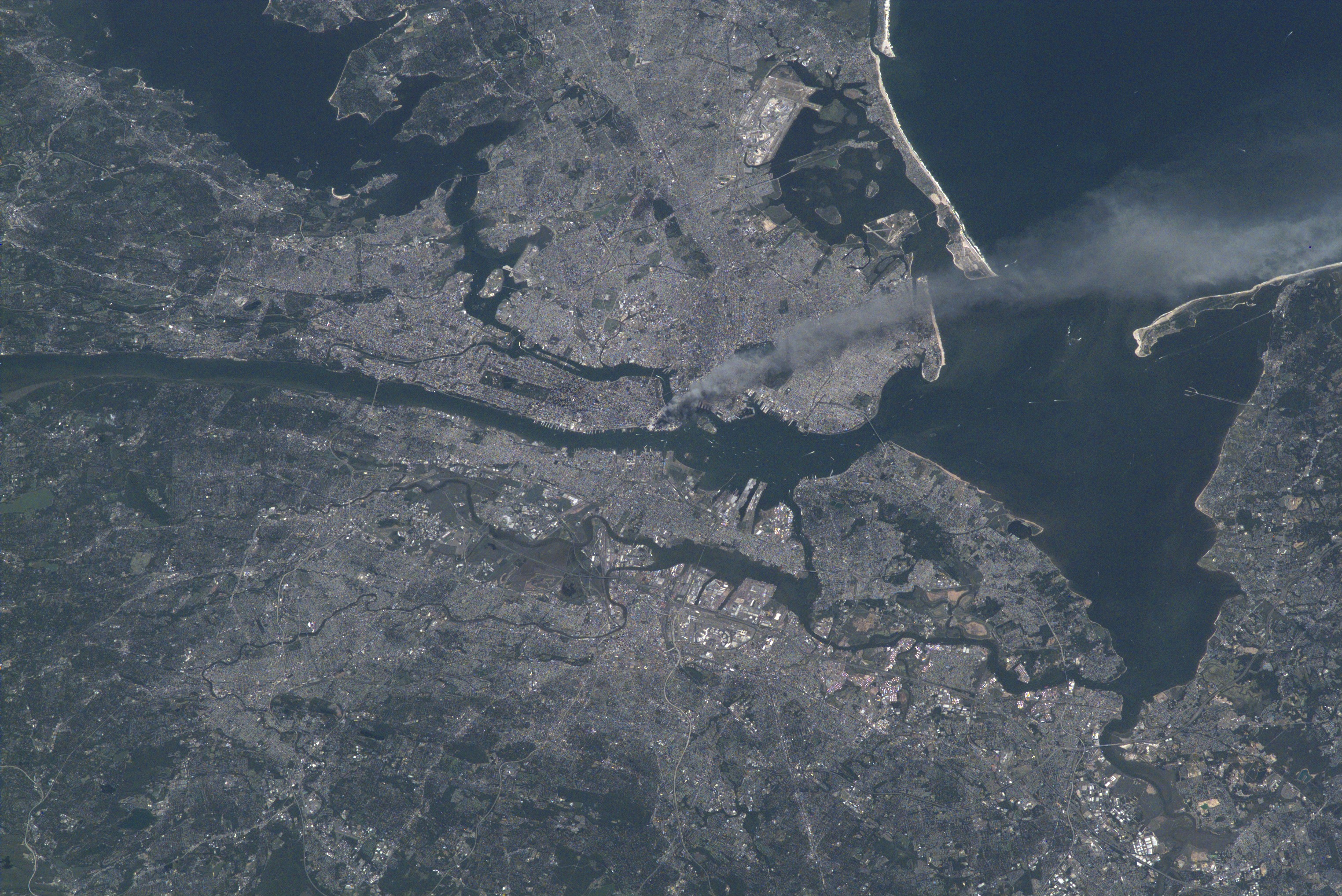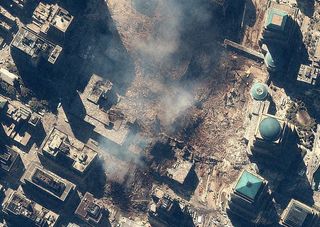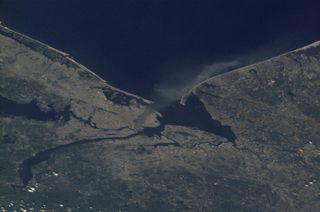NASA & Military After 9/11: Grappling with US Space Security

The terrorist attacks that shook the United States 10 years ago had effects that reached all the way into space.
Not only did the events of Sept. 11, 2001, prompt NASA to immediately beef up its already strict security procedures, they forced military space officials to reassess their priorities regarding space security and triggered a shift in space policy.
"There were certainly efforts made to link responding to terrorist threats to support for and expanding missile defense," said Joan Johnson-Freese, a space policy analyst at the Naval War College in Newport, R.I.
Before 9/11, space security concerns under President George W. Bush were largely focused on China, Johnson-Freese explained. Questions swirled around what kind of space hardware China was building, why, and how the United States should respond. [9/11 Remembered in Space Photos]
"The U.S. could pretty much answer the 'what' questions, but the others were more problematic," Johnson-Freese said. "China had questions about U.S. 'intent' – especially as concerned missile defense and rhetoric about 'space dominance' – and the U.S. had questions about Chinese 'intents.' Since most space technology is dual-use, determining what a country intends to use for civilian rather than military use, and what military hardware was defensive rather than offensive, is difficult."

A nation at war
Concerns about China did not go away following 9/11, but the focus of space security naturally shifted to Iraq and Afghanistan, “where space-force enhancement capabilities were required – communications, surveillance, etc.,” as the nation waged dual wars, Johnson-Freese said.
Get the Space.com Newsletter
Breaking space news, the latest updates on rocket launches, skywatching events and more!
But the expansion of space security was itself hampered by the war effort, and “the costs of the war also meant that very expensive space systems were competing for funds to day-to-day operations,” she added.
As the country marks the 10-year anniversary of 9/11, the lingering effects of the attacks can still be felt, and many of the security measures that were introduced a decade ago either are still in place or have been expanded. [Remembering the Fallen: 9/11 Memorials Gallery]
At NASA, security, particularly during launches, has been heightened since 9/11.
"Everybody re-evaluated their security policies and practices, and we still do," NASA spokesman Allard Beutel told SPACE.com. "Ten years later, we’re constantly re-evaluating security. As new threats come up, new countermeasures have come into place. It’s an ongoing process, and it's just the way of life in the post-9/11 world."

Shuttle launches after 9/11
Security at NASA has always been tight, particularly at Kennedy Space Center in Cape Canaveral, Fla., from where the agency’s space shuttles launched into space for 30 years until the fleet's retirement last month. The Florida spaceport is also adjacent to the Cape Canaveral Air Force Station.
"You always have to evaluate security measures, and we did that before the 9/11 attacks as well," Beutel said. "The space shuttles and human spaceflight have always been high-profile targets, if you think about it. The attacks didn’t change that; it just brought it into a new light."
Nearly three months after 9/11, the space shuttle Endeavour lifted off on its STS-108 mission to the International Space Station. The Dec. 5 launch occurred amid high security in cooperation with Air Force and other military personnel. [Photos of NASA's Last Space Shuttle Launch]
"The space shuttle is a highly visible national symbol and a large commitment by the American taxpayers," Wayne Hale, the space agency’s former shuttle chief and STS-108 lead flight director, said at the time. "So we would be remiss if we didn't take steps to protect that asset."
Leading up to Endeavour's liftoff, extra security precautions included withholding the announcement of the mission's scheduled launch time.
"There was a concern that the space shuttle launch would be a potential target, especially so close after the attacks," Beutel explained. So NASA declined to release the target launch time.
"A block of time – something like a four-hour window – was given instead. It was only much closer to the actual launch that we got more specific," he said.
This practice was continued for more than a year, through the ill-fated STS-107 flight of the space shuttle Columbia , which broke apart during re-entry on Feb. 1, 2003. When NASA’s shuttle fleet returned to flight in 2005, the agency was confident that broader security measures would make announcing launch times less of a risk, Beutel said.
NASA in the post-9/11 world
Other changes restricted the public's access to the grounds at Kennedy Space Center.
"For two decades, the general public was able to obtain car passes that let them come to KSC and watch a shuttle launch," Beutel said. "People loved it – tens of thousands of people were able to see launches close up. But we never resumed this in the post-9/11 world. It was just the way things had to be. It was a potential threat to have the general public come into a secure federal facility attached to a military institution."
Immediately following the 9/11 attacks, the Kennedy Space Center Visitor Complex closed for a few days, "to review and update safety and security measures," said Andrea Farmer, public relations manager at the visitor complex.
"We worked closely with NASA," Farmer added.
One aftereffect of 9/11 continues to shape the future of NASA and human spaceflight, Johnson-Freese said. The end of the space shuttle program and the transition toward relying on commercial firms for access to low-Earth orbit are reflections of a decade-old change in political priorities.
"The political will for space exploration, especially manned space, has suffered since 9/11, paying for the subsequent wars, and most recently the economic downturn," said Johnson-Freese. "There is significant rhetorical support – but not when prioritized against other areas of government spending. Americans are proud of the space program, but when jobs, 401(k)s and the debt are considered, there simply isn’t the political will to fund NASA to the level necessary for it to actually carry out a visionary – return to the moon, go to Mars, etc. – type program.
"We are in a very difficult transition period between having a government-funded program and a largely private one. I don't think people realize how difficult it could be."
You can follow SPACE.com staff writer Denise Chow on Twitter @denisechow. Follow SPACE.com for the latest in space science and exploration news on Twitter @Spacedotcom and on Facebook.
Join our Space Forums to keep talking space on the latest missions, night sky and more! And if you have a news tip, correction or comment, let us know at: community@space.com.

Denise Chow is a former Space.com staff writer who then worked as assistant managing editor at Live Science before moving to NBC News as a science reporter, where she focuses on general science and climate change. She spent two years with Space.com, writing about rocket launches and covering NASA's final three space shuttle missions, before joining the Live Science team in 2013. A Canadian transplant, Denise has a bachelor's degree from the University of Toronto, and a master's degree in journalism from New York University. At NBC News, Denise covers general science and climate change.